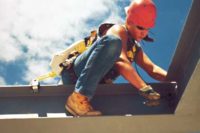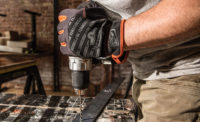Awareness of respirator fit testing or face fit testing has increased over the years due to an expansion in regulation globally and from impacts of the global pandemic. Many times, the focus is strictly on two of the benefits, sizing the respirator and confirming the fit of the respirator. These are both very important aspects as the correct size and fit is critical in the protection provided by the respiratory protective equipment (RPE), but there are several other important benefits from fit testing that are often overlooked. Two critical aspects are respirator integrity and confirmed proper donning of the respiratory protection which each have their own effect on the given protection.
The standard that drives the requirements for RPE and its proper use for the U.S. market is OSHA CFR 1910.134 held within 1910 Subpart I Personal Protective Equipment. The standard notes that “A respirator shall be provided to each employee when such equipment is necessary to protect the health of such employee. The employer shall provide the respirators which are applicable and suitable for the purpose intended. The employer shall be responsible for the establishment and maintenance of a respiratory protection program, which shall include the requirements outlined in paragraph (c) of this section. The program shall cover each employee required by this section to use a respirator.” When a respirator is issued, fit testing is required before the initial use as stated in section 1910.134(f) “Fit testing. This paragraph requires that, before an employee may be required to use any respirator with a negative or positive pressure tight-fitting facepiece, the employee must be fit tested with the same make, model, style, and size of respirator that will be used. This paragraph specifies the kinds of fit tests allowed the procedures for conducting them, and how the results of the fit tests must be used”. Fit Testing is also required to be performed at least annually or if there is a change to the respirator used (size, style, model or make) (1910.134(f)(2) or if there are changes in an employee’s physical condition, weight changes etc. 1910.134(f)(3).
The sections of the OSHA standard 1910.134 that follow, include requirements such as Maintenance and care of respirators, Cleaning and disinfecting, Inspection and Repair. OHD’s customer base performs hundreds of thousands of fit tests annually across a diverse makeup of industries. It is unfortunately true that most respirators are rarely inspected or repaired, and this is especially true in Industrial market segments. Why is this important? Although size and fit are important, the integrity and functionality of the respiratory protection is critical to the performance and protection achieved as noted not only by OSHA but by respirator manufacturers. If there are integrity issues from missed inspections or repairs, the RPE will not protect the employee to the designed level, ultimately reducing or eliminating the individual importance of the size and fit aspects.
A Quantitative fit test, utilizing an accurate technology such as Controlled Negative Pressure (CNP) used within the OHD QuantiFit2®, will identify respirator integrity issues as well as confirming the size and fit of the respirator. This elevates the importance of a fit test from size and fit to a RPE testing process. Identifying faults and required repairs ultimately boosts a company’s respiratory protection program. One real world example of this dynamic was demonstrated within a company who upgraded their fit testing program to CNP. As the company performed CNP fit testing on employees and their issued respirators, failures began to occur. After initial failure troubleshooting proved that the testing was being conducted correctly, the company began inspecting the respirators. Ultimately this led the company to identify faulty parts, dirty components, and integrity issues with the failing respirators. CNP fit testing enhanced the program, propelling the company to repair or replace these respirators with confirmed fully functional respirators.
Without an accurate fit testing system these issues could go unnoticed as they had in the years prior, which lead to a reduction of the protection of the health and safety of the employee. That threat of reduced health and safety is what we are all working to eliminate, and through accurate fit testing this can become a more achievable future.
One other key aspect is the use of the employee’s assigned or personally issued respirator in fit testing. Companies that use surrogate respirators for fit testing lose the important aspect of testing the assigned respirator to identify any faults or integrity issues. OHD highly recommends testing in assigned respirators that are used in the field wherever possible.
Donning and training is another key benefit that is often overlooked with respect to fit testing. OSHA requires that all RPE be issued with training before first use and at least annually 1910.134(k). One of the is best ways to confirm that an employee knows how to properly don, doff, tighten, adjust, and properly wear the respirator is through the initial fit test and repeated annual fit test. If respiratory protection is not donned properly, the value of size and fit is greatly reduced as is the protection of the employee. One benefit of the REDON protocol, exclusivity accepted for CNP and used within the QuantiFit2®, is that the employee is required to don and reproduce this donning multiple times throughout the fit testing process on at least an annual basis. Alongside a company’s training program, fit testing with an accurate technology confirms that the training is not just an exercise but that the employee can retain that information as well as execute it with an accurate donning, achieving a good fit.
Use your fit testing to not only achieve excellence in sizing and fit but also to achieve the additional benefits of donning and integrity checks of the RPE selected to protect your most important asset, your employees.
Learn more about the QuantiFit2 Here!






